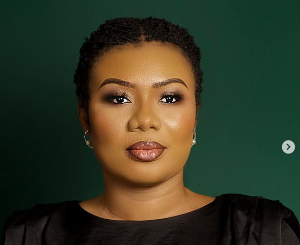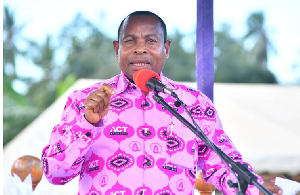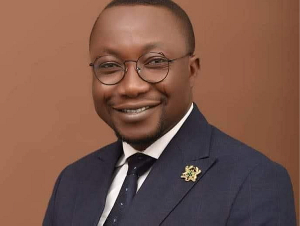As one new exhibition open for London wey dey torchlight Britain first black supermodel, Naomi Campbell career, make we look at women wey choose to follow di path of fashion – including di first black America Vogue cover model, Beverly Johnson.
"You wan be model?" Beth Boldt wey be talent scout ask as she approach one group of schoolgirls for London Covent Garden.
Fifteen-year-old Naomi Campbell stand one side, thinking say Boldt bin dey tok to one of her friends wey her hair fair.
But na Campbell, Boldt bin dey look. "I dey tok to you," she say.
Di shy teenager later become di most famous black model for history: supermodel wey dey extraordinary flexible – say she get di "walk" for di business – as well as media personality and advocate for equal rights for industry wia dem side line black pipo.
Celebrating Campbell 40-year career for di exhibition NAOMI: In Fashion, wey open for London Victoria & Albert Museum on 22 June. E show Campbell high and low, plus many of her most memorable outfits, including di blue Viviene Westwood heels wey bin fall her for runway for 1993.
Dem also display di silver Dolce and Gabbana couture gown wey she wear for di last day of her community service, one five-day sentence for one assault offence wey her popular hot temper cause.
Wen Grazia Magazine ask her why she dress up for di occasion, she ansa: "Why dem go expect me to look untidy or sometin?"
Fighting for right for pipo to see dem
Na maybe dis refusal to allow society put her down wit dia expectations help make her French Vogue first black cover girl for 1988. Wen dem use her white supermodel friends for cover but dem reject Campbell, Campbell push harder. She go meet Yves Saint Laurent, one of Vogue biggest advertisers, wey agree to stop releasing cloths until di magazine agree.
"I definitely get to fight harder," Campbell tok for di book wey come wit di V&A exhibition.
"Some pipo bin dey honest to tell me say dem no ever tink to use black girl. So I bin no dey always take am as racism. I just take am as 'Okay, you bin no try before, now na time to try.'"
Campbell quickly pay homage to oda pioneers.
Speaking to chat show host Michael Parkinson for 2004, she say: "Wen I bin get cover, I tink dis no be just for only me, na for generation of girls before me [and] afta me."
One on dis kain role model wey make way for changemakers like Campbell na Donyale Luna.
But even though di US model become di first black cover star of Harper Bazaar for 1965, di result bin dey disappointing: dem bin use drawing instead of foto – and dem make her skin light pink.
Also disappointing na di mix reaction from pipo for allowing black pipo appear for pages wey dem bin don dey see for long as na only for white pipo.
For US, some sponsors threaten to withdraw dia advert and some readers cancel dia subscriptions.
Even so, di following year, British Vogue put Luna on im cover.
Dis time, her skin bin dey darker but di way dem present her as Ancient Egyptian give her image of "exotic" black woman, and confam di limited range of roles wey black women fit get dat time.
Question di idea of black beauty
"Historically, dem call black women for white America many tins," di US writer and model Barbara Summers write for her landmark 1998 work, Skin Deep: Inside di World of Black Fashion. "Beautiful dey among di last."
Explaining di social and historical context of di idea of black beauty for her book, she note say, "careful … and mostly unattractive" presentation of black women for di 20th-Century arts and di accepting of "di sad legacy of slavery", wey she say na im dey determine "di parameter of our existence from wetin we fit wear to who we fit be".
For early 20th Century, new products like bleaching cream and relaxer send out message say dem need to correct di tins wey make up natural black, and dis cause wetin Summers describe as "confusion" over wetin black beauty be.
Meanwhile, lynchings for US clearly communicate di danger of entering white pipo area.
Na so e bin be, until di civil rights movement of 1950s and 60s wey more pipo begin fight against US racism.
Naomi Sims na one example of new generation of lucky models wey no wait for permission before dem invite her enta industry wey be mainly white.
As she tire to dey collect breakfast from agencies, she carry her sef waka straight to photographers, eventually she land magazine covers and walk for Halston and Giorgio di Sant'Angelo.
She bin champion fellow American Beverly Johnson – wey dis year celebrate di 50th anniversary of being di first black American Vogue cover star – wit one-woman show, Beverly Johnson: Di Face wey Change am all, based on her 2015 memoir. "She bin dey so gracious to me and I say to mysef na so me sef go treat di oda young models," Johnson tell BET last year.
For 1988, two ogbonge black models − Iman, wey from Somalia, and New York-born Bethann Hardison – establish di Black Girls Coalition so e go fit to petition di fashion industry for equal representation and pay. Campbell join one year later, and she bin don dey describe Hardison as "second mama".
Hardison bin waka di legendary 1973 Battle of Versailles, one catwalk stand-off between Europe and US designers wey mark turning point for fashion history, wen modern US fashion houses present one army of majestic black models, wey unexpectedly outshine di Paris couture models. "Fashion no ever fit dey colonised in di same ways again," Summers write.
One of di Coalition success be say e push for all-black issue of Vogue Italia.
Di 2008 edition, wey bin present four different covers (including Campbell), sell out for UK and US within 72 hours.
Edward Enninful, wey style di shoot, say: "I bin no ever tink say I go ever see sometin like dis – my pipo, my race, wear di collection, dey gorgeous, chic, real women in dat way. But di most important tin be say: dis one prove say we dey bankable. We fit sell."
Inspired by di strong mind of di pipo wey don do dis work before her and her friendship wit Nelson Mandela, wey she bin meet for di 1990s, Campbell activism become central to her work.
She be big advocate for African designers like Marianne Fassler and Tiffany Amber, she boost dia rep by walking for dia shows plus give her support to Arise Fashion Week, wey dey celebrate African fashion.
Model campaigners like Campbell dey gradually win dia battle. Di Fashion Spot diversity report for New York Fashion Week show say for spring 2015 na just one fifth of di models be black, compared to more dan half for spring 2022.
But work still dey front before black models go fit finally feel at home. Detroit-born model Megan Milan say for one viral TikTok post last year, for example, say she bin get to redo her make up for one New York Fashion Week show as di artist bin no sabi anytin about black skin. "I look like ghost," she lament.
For British-Ghanaian model, visual image-maker and storyteller TJ Sawyerr, wey don work for Calvin Klein, Vivienne Westwood and Lacoste, di mata for ground na wetin im describe as "performative tokenism" of some of di industry interest in black models.
"If you dey seriously aware say you dey do inclusion base on say you wan mark quota box or fulfilling PR strategy, I tink for many pipo e go make dem feel say dem no rate dem at all," im tell BBC.
Sawyerr experience sha, dey mainly positive. "Seeing examples of pipo wey look like us… provide me wit plenty confidence to di point wia I no too ask plenty questions weda e possible for me as a black person wey dey enta di field," e tok, as im give example of US model Alton Mason, wey im describe as di "first modern-day male supermodel", and referencing good friend and fellow Ghanaian Ottawa Kwami as "possibly one of di best examples of wetin di new-found accessibility of dis industry dey do for pipo from marginalised backgrounds".
Sawyerr now dey pay am forward, recruiting black set designers, models, art directors and stylists for projects wey im say, "further di appreciation of our culture and wia we come from" and "celebrate individuals wey fit no get di shine wey dem deserve". Sawyerr, like Campbell, grow up for South London, and don photograph di supermodel for wetin im remember as “really nice full-circle moment". E describe her as "big enabler", wey "make way for much more accessible commercial industry wen e come to black models".
Building on di success of di pipo before her and now lifting new talent, Campbell don change di face of fashion forever and scata di industry narrow idea of beauty.
"Black women get more DNA for dis planet pass anybody else," US model Veronica Webb tok for di 2022 documentary Supreme Models. "We look 100 million different ways, and dem no suppose deny am. Dem no suppose deny any aspect of our beauty."
BBC Pidgin of Sunday, 23 June 2024
Source: BBC
















